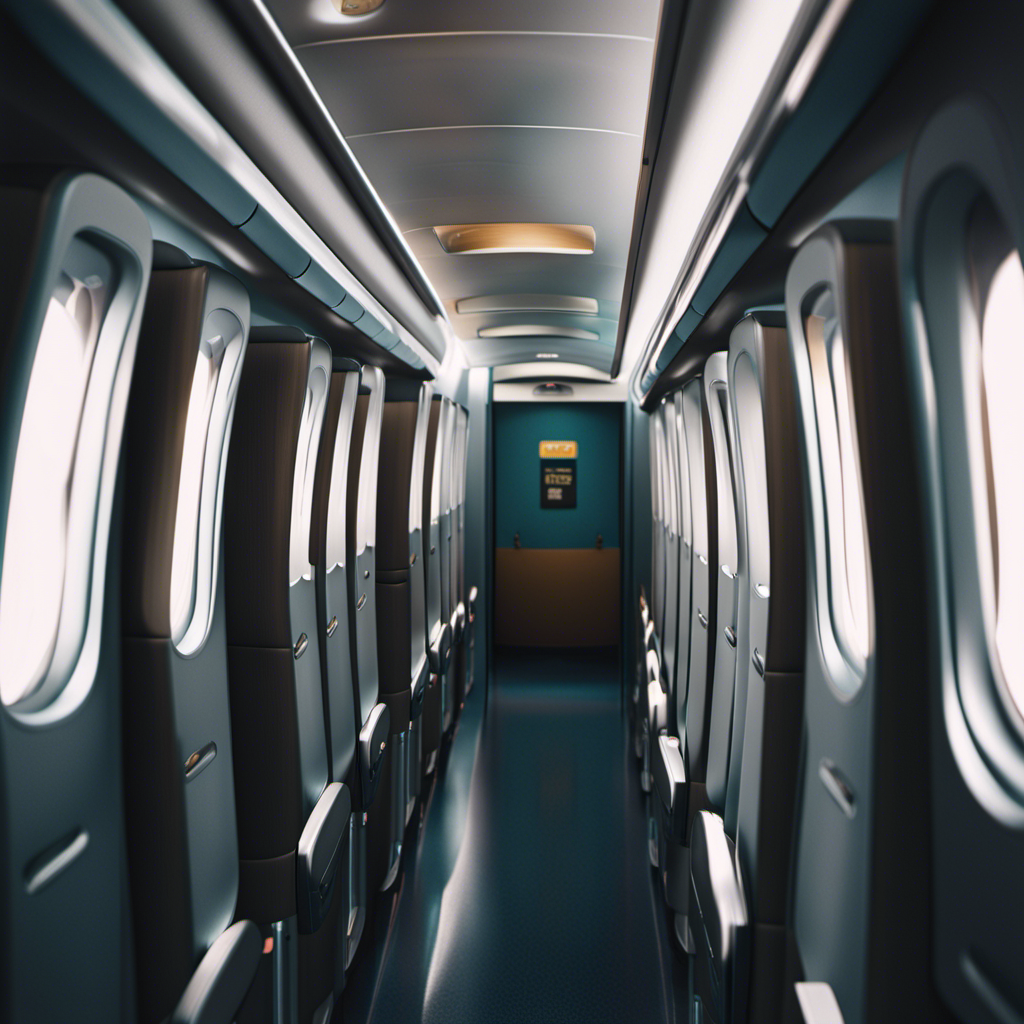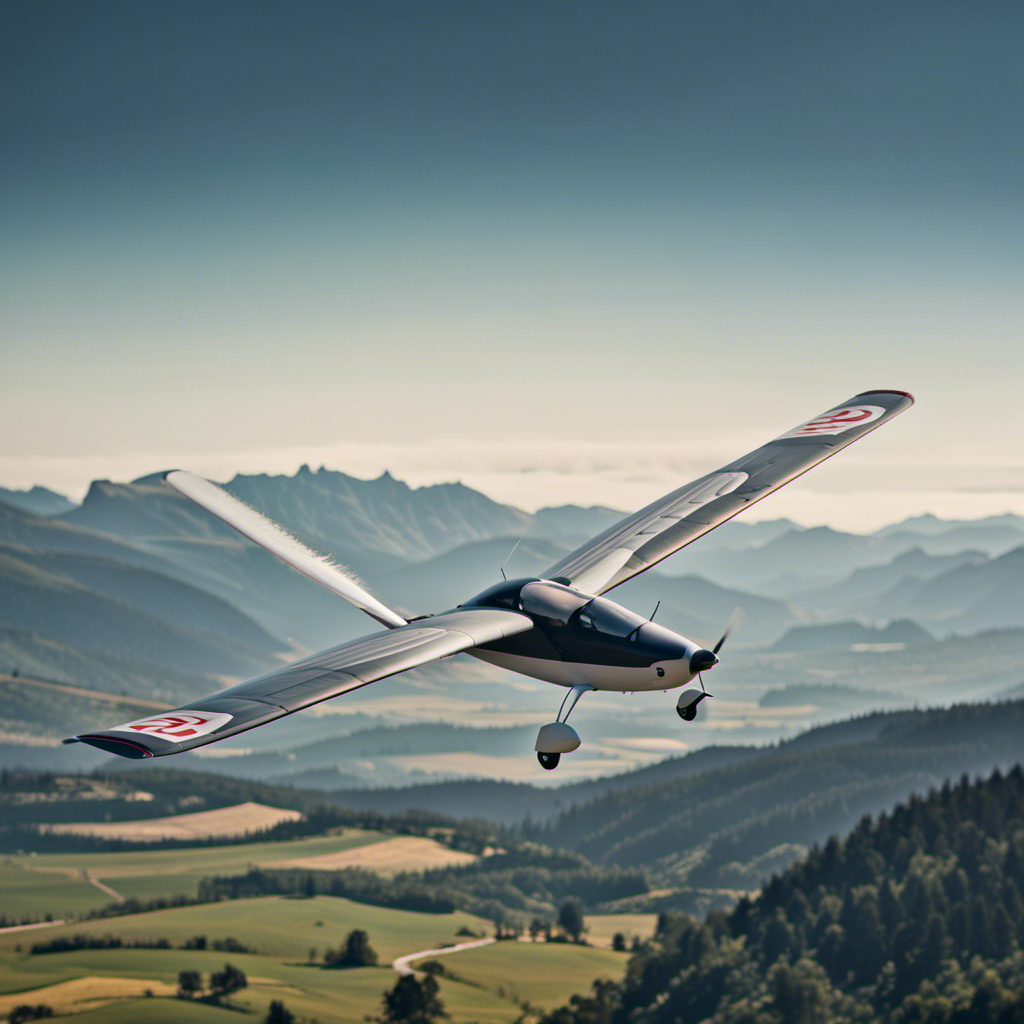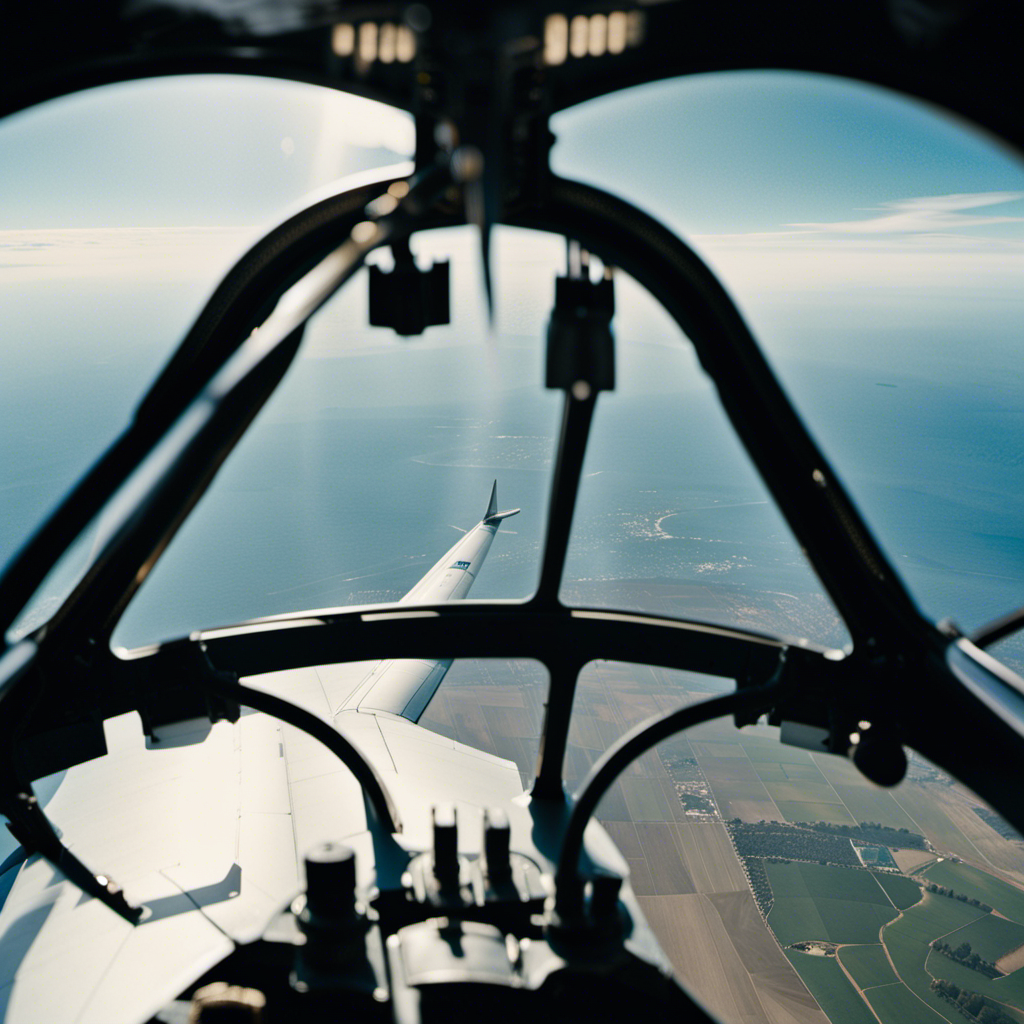As a hang glider pilot, I have always been intrigued by the idea of soaring through the air without any limitations from the ground below. That is why I was excited to learn about motorized hang gliders.
Imagine the possibilities: enhanced control, extended flight time, and increased safety. But, as with any innovation, there are trade-offs to consider.
In this article, we’ll explore the advantages and disadvantages of hang gliders with engines, examining everything from maneuverability to cost considerations.
Let’s dive in and explore this thrilling world of powered hang gliding.
Key Takeaways
- Hang gliders with engines produce noise pollution and can disrupt the environment and disturb wildlife.
- Regulatory compliance and insurance coverage are crucial for safe operation and protection against accidents and damages.
- Suitable weather conditions and understanding restrictions are important for safe flying.
- Hang gliders with engines require less maintenance compared to traditional aircraft, resulting in lower maintenance costs.
Enhanced Control and Maneuverability
With an engine on your hang glider, you’ll have better control and maneuverability, allowing you to navigate through the air with ease. The addition of an engine provides enhanced speed, which means you can cover larger distances in a shorter amount of time.
This increased speed also allows for increased versatility, as you can easily change direction and altitude to adapt to different flying conditions or explore new areas. The engine gives you the ability to climb higher and stay in the air longer, which adds to the overall experience and enjoyment of hang gliding.
Furthermore, the engine provides a sense of security and confidence, knowing that you have the power to control your flight path and respond to any unexpected situations.
Transitioning into the next section, the extended flight time and range provided by the engine further enhances the possibilities and potential for exploration.
Extended Flight Time and Range
To get the most out of your hang glider with an engine, you’ll appreciate the extended flight time and range it offers. Here are four reasons why this is advantageous:
-
Longer Flight Duration: With the engine, you can enjoy extended flight durations compared to traditional hang gliders. This allows for more exploration and enjoyment of the surrounding scenery.
-
Increased Mobility: The extended range provided by the engine enables you to travel to farther destinations, expanding your horizons and opening up new possibilities for adventure.
-
Enhanced Flexibility: The extended flight time and range give you the freedom to choose your flight path and explore different areas without the constraints of limited flight capabilities.
-
Improved Efficiency: The engine on your hang glider allows for better fuel management, ensuring that you can make the most of your flight time while maintaining optimal performance.
With these advantages in mind, let’s now delve into the increased safety and stability that come with a hang glider equipped with an engine.
Increased Safety and Stability
Equipped with an engine, a hang glider offers increased safety and stability, providing a more secure and controlled flying experience. The addition of an engine enhances the control and maneuverability of the hang glider, allowing pilots to navigate with precision and confidence. This increased stability also extends the flight time and range, enabling longer and more adventurous journeys.
However, the benefits of increased safety and stability come with certain considerations. The initial investment for a motorized hang glider is higher, and there are additional expenses for fuel and maintenance. Noise and environmental impact are also factors to be mindful of. Furthermore, regulatory and legal considerations may impose limitations on flying conditions and impose restrictions.
Nevertheless, for those with the necessary experience and personal preference, the advantages of enhanced control and stability outweigh these potential drawbacks.
This transition into the subsequent section about ease of use and accessibility sets the stage for discussing the practical aspects of operating a motorized hang glider.
Ease of Use and Accessibility
Operating a motorized hang glider is relatively straightforward and accessible to those with minimal flight experience. The ease of operation is one of the key advantages of this type of aircraft. Unlike traditional hang gliders, which rely solely on wind currents for lift, motorized hang gliders have an engine that provides thrust, allowing for greater control and maneuverability.
The controls are intuitive and responsive, making it easier for beginners to learn and master. Additionally, motorized hang gliders are readily available for purchase or rental at many flight schools and recreational centers, further enhancing their accessibility. With minimal training and supervision, individuals can quickly learn to operate these aircraft and experience the thrill of flight.
Transitioning into the subsequent section on ‘cost considerations,’ it is important to analyze the financial aspects of owning and operating a motorized hang glider.
Cost Considerations
When considering the cost of a hang glider with an engine, it’s important to factor in the higher initial investment compared to a regular hang glider.
The engine itself can be quite expensive, and there may also be additional costs for installation and integration into the glider.
Furthermore, ongoing expenses for fuel and maintenance should be taken into account, as these can add up over time.
Higher initial investment for the engine
The higher initial investment for the engine is a downside to using a hang glider with an engine. The cost of a hang glider itself may be relatively low compared to other aircraft, but the addition of an engine can significantly increase the overall price. This higher investment is mainly due to the cost of the engine itself, which can be quite expensive, depending on the type and brand.
Additionally, there may be other equipment and modifications required to ensure the engine is properly integrated into the hang glider. However, it’s important to consider the long-term financial benefits of using a hang glider with an engine. Despite the higher upfront cost, the increased capabilities and potential for longer flights can make it a worthwhile investment for those who are passionate about powered hang gliding.
Moreover, the enjoyment and freedom that comes with flying a powered hang glider can outweigh the initial financial burden. Moving forward, it’s crucial to consider additional expenses for fuel and maintenance.
Additional expenses for fuel and maintenance
One downside to using a hang glider with an engine is that there are additional expenses for fuel and maintenance. When considering the costs associated with operating such a vehicle, it is essential to take into account the fuel efficiency of the engine. While advancements have been made in this area, it is still a concern for many pilots.
Additionally, the potential for engine failure can be a worrisome factor. The need for regular maintenance and repairs can result in significant expenditures over time. These additional costs can impact the overall affordability and accessibility of using a hang glider with an engine. However, despite these drawbacks, the benefits of increased maneuverability and extended flight time often outweigh the financial considerations.
Transitioning into the subsequent section, it is also important to address the noise and environmental impact of using such vehicles.
Noise and Environmental Impact
If you’re considering a hang glider with an engine, you should be aware of the noise and environmental impact it may have.
These engines produce a significant amount of noise pollution, which can disrupt the peace and tranquility of the surrounding environment. The noise generated by the engine can also disturb wildlife and have negative effects on their behavior and habitats.
In addition to noise pollution, these engines also contribute to carbon emissions. The burning of fuel releases carbon dioxide and other greenhouse gases into the atmosphere, contributing to climate change and air pollution.
It is important to consider these factors when deciding whether to invest in a hang glider with an engine.
Moving on to regulatory and legal considerations, there are several important factors to keep in mind.
Regulatory and Legal Considerations
When considering a hang glider with an engine, it’s important to be aware of the regulatory and legal considerations.
Regulatory compliance is crucial to ensure the safety of both the pilot and other airspace users. These regulations vary from country to country, and it is essential to understand and adhere to them.
Additionally, insurance requirements are another significant aspect to consider. Flying a hang glider with an engine involves certain risks, and having appropriate insurance coverage provides protection in case of accidents or damages. It is essential to consult with insurance providers to determine the coverage that is necessary and ensure compliance with any insurance requirements.
Understanding and complying with these regulatory and legal considerations is vital for a safe and lawful operation of a hang glider with an engine.
Transitioning into the subsequent section, let’s now explore the limitations on flying conditions.
Limitations on Flying Conditions
As a pilot, I’m acutely aware of the dependence on suitable weather conditions for safe flying. Weather conditions such as wind speed, visibility, and precipitation play a crucial role in determining whether it’s safe to take off and navigate through the air.
Additionally, there are often restrictions on flying in certain areas or during specific times, such as near airports, military bases, or during temporary flight restrictions due to special events or emergencies. These limitations are in place to ensure the safety of both pilots and the general public.
Dependence on suitable weather conditions for safe flying
When using a hang glider with an engine, it is important to consider the dependence on suitable weather conditions for safe flying. The suitability of weather conditions has a significant impact on flight safety.
Here are two sub-lists to evoke an emotional response in the audience:
Positive impacts of suitable weather conditions:
- Enhanced visibility allows for better navigation and avoidance of potential obstacles.
- Stable atmospheric conditions reduce the risk of turbulence and sudden changes in wind direction, ensuring a smoother and safer flight experience.
Negative impacts of unsuitable weather conditions:
- Strong winds can make it difficult to control the hang glider, leading to unstable flight and potential accidents.
- Adverse weather conditions such as thunderstorms or heavy rain pose a serious threat to flight safety, increasing the risk of lightning strikes or decreased visibility.
Considering the dependence on weather conditions, it is essential to understand the restrictions on flying in certain areas or during specific times. Without this understanding, the safety of the flight may be compromised.
Restrictions on flying in certain areas or during specific times
Transitioning from the previous subtopic, it is important to consider the restrictions and limitations that come with flying a hang glider with an engine. While weather conditions play a crucial role in safe flying, there are additional factors that can further restrict the ability to take flight. These restrictions may include flying in certain areas or during specific times. To provide a comprehensive understanding, I have created a table below outlining some common restrictions and limitations faced by hang glider pilots:
| Restrictions/Limitations | Description |
|---|---|
| Airspace Restrictions | Certain airspace may be restricted due to military operations, national parks, or other regulations. Pilots must adhere to these restrictions to ensure safety and compliance. |
| Time Restrictions | Some areas may have time restrictions on flying, such as noise curfews or limitations during peak traffic hours. These limitations aim to minimize disturbances to the surrounding environment and community. |
| Environmental Restrictions | Natural reserves, wildlife habitats, or sensitive ecosystems may impose limitations on flying to protect the environment and preserve biodiversity. |
Transitioning into the subsequent section on maintenance and repair, it is crucial to understand the importance of regular upkeep and addressing any issues that may arise during the operation of a hang glider with an engine.
Maintenance and Repair
One of the advantages of a hang glider with an engine is that it requires less maintenance and repair compared to traditional aircraft. This is due to the simpler design of the engine and the overall structure of the hang glider.
The maintenance costs are significantly lower, as there are fewer complex systems to maintain and repair. In case of any issues, a troubleshooting guide can be followed to identify and resolve any problems efficiently.
Regular inspections and routine maintenance tasks such as checking fuel levels, engine oil, and propeller condition are essential to ensure optimal performance and safety.
However, it is important to note that personal preference and experience play a crucial role in the overall maintenance and repair process, as different pilots may have different expectations and requirements for their hang glider.
Personal Preference and Experience
If you’re an experienced pilot, your personal preference will greatly influence the type of hang glider you choose to fly. Your flying experience plays a crucial role in determining the right hang glider for you.
The decision ultimately boils down to what you value most in a hang glider – speed, maneuverability, or stability. Some pilots prefer a hang glider that offers a thrilling and fast-paced flight experience, while others prioritize safety and stability.
Your personal preference also extends to the design and features of the hang glider, such as weight, wing shape, and control system. It is important to consider your own comfort level and skill set when making this decision.
Ultimately, the best hang glider for you is the one that aligns with your personal preference and complements your flying experience.
Frequently Asked Questions
Can a hang glider with an engine be used for long-distance flights?
Yes, a hang glider with an engine can be used for long-distance flights. It offers advantages such as increased range and the ability to take off and land in various locations. However, there are also disadvantages like added weight and fuel requirements.
Are hang gliders with engines more expensive than traditional hang gliders?
Hang gliders with engines are indeed more expensive than traditional hang gliders due to the cost difference in the engine and additional equipment. Moreover, they also require fuel consumption, which further adds to the overall expenses.
Do hang gliders with engines produce more noise than traditional hang gliders?
Hang gliders with engines produce more noise than traditional hang gliders, leading to potential noise pollution. This can raise safety concerns as it may distract pilots and disrupt wildlife.
Are there any restrictions or regulations on flying a hang glider with an engine?
I investigated the safety regulations for flying hang gliders with engines and found that there are specific guidelines in place to ensure the safety of both the pilot and other aircraft. Additionally, the environmental impact of hang gliders with engines is relatively low compared to other motorized aircraft.
Do hang gliders with engines require more maintenance and repair than traditional hang gliders?
Hang gliders with engines do require increased maintenance compared to traditional hang gliders. However, the performance advantages, such as increased speed and longer flight duration, make the extra maintenance and repair worth it.
Conclusion
In conclusion, the hang glider with an engine offers a soaring experience like no other. With enhanced control and maneuverability, it allows pilots to navigate the skies with precision, like a bird gracefully gliding through the air.
The extended flight time and range provide the freedom to explore vast distances, like a wanderer embarking on an endless journey. Safety and stability are increased, akin to a sturdy ship sailing through calm waters.
While there are cost, regulatory, and maintenance considerations, the advantages outweigh the disadvantages. Ultimately, personal preference and experience will guide one’s choice in this exhilarating aerial adventure.
With a heart that soars as high as the skies, Aria, affectionately known as “Skylark,” is the driving force behind Soaring Skyways. Her journey into the gliding world began as a young dreamer gazing up at the soaring birds, yearning to experience the weightlessness and freedom they embodied. With years of experience both in the cockpit and behind the scenes, Aria’s commitment to the gliding community is unwavering.










